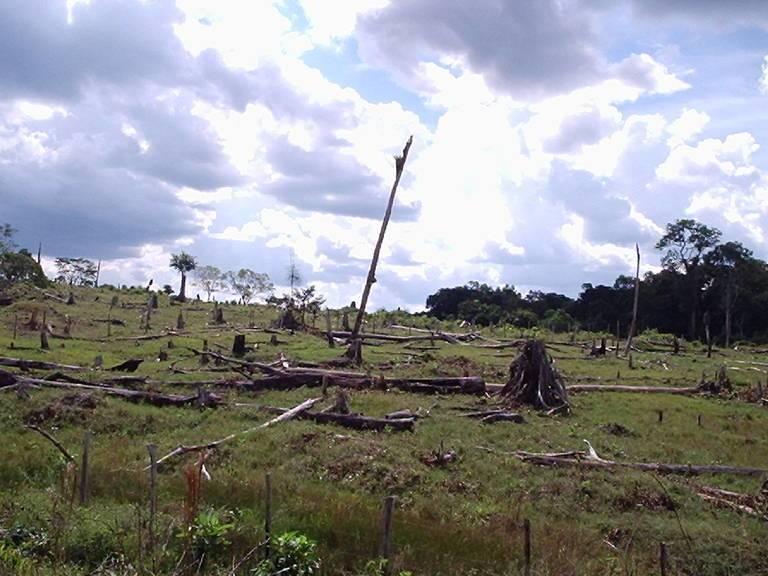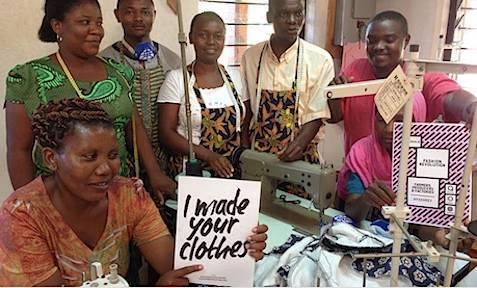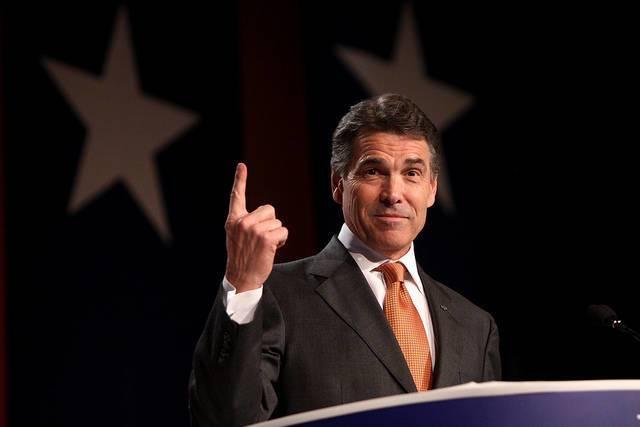Saving Brazil's Amazon: A Job for Tiny Norway


Earlier this month, Brazil's immensely popular supermodel Gisele Bündchen managed to do something that environmental and human rights organizations have been trying to accomplish for months: With a single tweet, she got Brazil President Michel Temer to promise he would drop his support for legislation that would have removed protections from the country's Amazon preserves.
It's a move that may seem small in the scope of global ecological woes, but since Temer took office in 2016, the government's efforts to stop the deforestation of its Amazon Rainforest has taken a dramatic back slide. Many critics credit that failure to Temer's affiliation with the country's agribusiness lobby and his lukewarm attitude toward environmental protections. The bill that Temer was expected to have signed (and which he himself proposed) would have opened up tracks of land to agricultural businesses that, according to Mongabay, supported Temer's rise to power after former president Dilma Rousseff was impeached last year.
Brazil outsourcing of Amazon monitoring
But Temer's veto of his own legislation may only be a temporary stay on the fight to open up more Amazon Forest to developers. In May, shortly before the legislation was expected to pass, the government announced that it would now be outsourcing deforestation monitoring. Since the 1980s, that task has been overseen by the National Institute of Space Research, which as we have written before, has played a key role in protecting Brazil's environmental legacy through remote sensing technology. It has also helped the government to enforce anti-deforestation policies.
The recent firing of a key scientist and the announcement that the government has other plans for deforestation monitoring is sending a worrisome signal to environmentalists and to countries that feel the Amazon's health will directly affect the world's future climate.
So on Thursday, the government of Norway delivered its own public mega-punch. It warned the Temer government that if it doesn't reverse its current track record in deforestation, Norway will cut off the incentive funding it has been providing to the cash-strapped country.
Since 2008, Brazil has been receiving $1.1 billion funding from the small Scandinavian country in return for reducing Amazon deforestation. In Norway's view, preserving the Amazon is a global investment. In Brazil's view, it's cash that is vital (especially right now) to its economic well being.
And apparently, the funding has been helping. According to Vidar Helgesen, Norway's environment minister, the rate of deforestation plummeted between 2008 and 2014 -- only to skyrocket in 2016, when some 3,000 square miles of rainforest was slashed for commercial purposes.
Brazil's economic crisis and the U.S.
Temer's administration is eager to bring economic stability to the country, which has been in the throes of political and economic crisis for several months. In May, Brazilian stocks took a nosedive after news was released that Temer may have sanctioned paying off a witness who was expected to testify in a massive graft probe.
That, in turn, has raised fears that major companies that have a vested interest in Brazil's agribusiness empire could be affected if the country's economic problems continue. Among the U.S. corporations that could be affected are Monsanto and Mosaic, major potash and phosphate mining company.
Goldman Sachs says Mosiac has a sales exposure of 26 percent in the Brazilian economy. Potash is used globally by small and large agricultural growers. Further economic problems could spell problems for companies that have large investments in Brazil.
And it could also spell problems for meat distributors as well. The same day that Brazil was handed its "desist deforestation" notice by Norway, the U.S. suspended imports of Brazilian beef, accusing Brazil's food inspectors of taking bribes. U.S. meat inspectors say they have turned away more than 10 percent of the imported meat they've checked from Brazil, a significantly larger amount than is normally rejected. Other countries have also suspended meat imports.
These problems, combined with the increasing global concern about the deforestation of the Amazon may spell demise for the Temer government, which is already on rocky ground with voters. Here in the U.S., it will be interesting to see how that plays out with fast food companies like Burger King that have relied on Brazil's beef production and have been accused of taking a direct role in the deforestation of the forest that scientists call the lungs of the planet Earth.
Flickr image:Daniele Gidsicki
Resonance's social impact mission to invest in 'Dismantling Poverty' In Bristol raises £2.1m


Breaking: Trump's Latest Energy Department Appointee Pines For Another 9-11


U.S. Energy Secretary Rick Perry started this week on a low note, and it all went downhill from there. In the latest blow to the agency's image, last Thursday the Washington Post reported that the agency's newly appointed director of the Office of Indian Energy Policy, William C. Bradford, has a recent history of racist and offensive comments on Twitter.
The offending tweets were deleted by Friday and Bradford has apologized in a note to the Post, but his troubles -- and those of the Energy Department -- are only beginning.
Energy Dept. gets West Point reject...
Bradford's apparent lack of qualification to lead an office that distributes millions in federal grants for Native American energy projects is one issue. His fitness for public office is another issue -- in 2015 he was forced to resign from his teaching position at West Point after evidence surfaced that he inflated his academic credentials and military experience.
The attention to Bradford's credentials followed the publication of a widely criticized, "inflammatory" article in which he accused U.S. legal scholars of constituting an "Islamist Fifth Column" aimed at destroying America from within.
The deleted tweets hint that Bradford has not had a change of opinion since then, and those appear to be the tip of a very large iceberg.
...with an affinity for anti-Muslim talk shows...
Deleting tweets from a personal Twitter account is easy to do. It is more difficult, if not impossible, to erase digital tracks from someone else's website.
That could open up a whole new can of worms for Bradford. As of this writing the William C. Bradford WordPress account still provides a link to his appearance this last February as a guest on the talk radio organization Global Patriot Radio.
Global Patriot Radio is the new name of New York based Radio Jihad, which has earned a spot on the Southern Poverty Law Center's list of anti-Muslim hate groups.
...who believes that law professors are conspiring against the U.S...
The interview with Bradford comes in near the end of a much longer program hosted by Gadi Adelman.
If you listen to the whole program you can probably see what prompted SPLCE to include GPR/Radio Jihad on the its anti-Muslim list. If you'd rather not, the interview starts shortly after the one hour mark (the lengthy ad at the beginning is unavoidable but after that you can scroll forward).
At the beginning of the interview, Bradford reprises the theme of his now notorious 2015 article, in which he advocates for an all-out war against terrorism that would include targeting legal scholars.
A 2015 piece in The Guardian took note of Bradford's focus on legal scholars:
Other “lawful targets” for the US military in its war on terrorism, Bradford argues, include “law school facilities, scholars’ home offices and media outlets where they give interviews” – all civilian areas, but places where a “causal connection between the content disseminated and Islamist crimes incited” exist.“Shocking and extreme as this option might seem, [dissenting] scholars, and the law schools that employ them, are – at least in theory – targetable so long as attacks are proportional, distinguish noncombatants from combatants, employ nonprohibited weapons, and contribute to the defeat of Islamism,” Bradford wrote.
...and wants another 9-11 to happen.
During the February interview, Bradford talks about his experience teaching at an academy in the United Arab Emirates. As he describes it, his students were eager for the U.S. to "get serious about wiping out the Muslim Brotherhood" and Isis.
He also claims that there was deep "revulsion" for Obama Administration policies on fighting terror among his UAE students, who feel that terrorism is an "existential threat" to their country that "we in America do not yet fully appreciate."
In that context, Bradford lays out a case for treating terror as an existential threat to the U.S. His model is the UAE, though that appears to be a misrepresentation of the UAE situation. UAE has been credited with avoiding full scale terror incidents, partly due to factors that seem to have a pacifying effect on terrorist organizations. Last year there was an uptick in individual attacks but no clear trend has emerged.
Back to the interview. Around the 1:11 mark Bradford argues that it "may take something on the order of 9-11 or orders of magnitude" before we take terror seriously:
"...and on that day, that's when we will have the same mindset that they have in the UAE today."
Adelman fleshes out the case for another episode on the scale of the September 11, 2001 bombing of the World Trade Center in New York.
He comments that on September 12th he was "actually hoping.... Thank god these 3,000 people didn't die in vain, because now America is going to change their attitude. Now America is going to realize the threat that we face..."
To Adelman's disappointment, that "excitement" was short-lived. The prospects for a united U.S. reaction faded within a few weeks "and then everybody forgot."
Bradford agrees that the failure of 9-11 to spark action is a "disappointment. In the interview he circles back once again to his 2015 article, and blames legal scholars for the failure of the public to unify behind a strong response:
...certain radical leftists...Islamophilic scholars with the legal academies started to write outrageous articles saying that the methods we would be using in the coming war were illegal, such as coercive interrogation or the use of bombing campaigns that might unintentionally result in civilian casualties.
He also refers to protests against the Bush Administration response to 9-11 as anti-American if not downright treasonous.
...the radical left took 9-11 not as previous generations did of Pearl Harbor, rather as a moment to rise up against the United States, Western civilization and everything for which it has stood.
That last remark concludes at around the 1:13 mark. There is more to the interview and Bradford has appeared on other GPR shows, so brace yourself for more to come as Bradford's unsavory writing and speaking come to light.
Image credit: Global Patriot Radio
3p Weekend: John Oliver Squirrel Lawsuit Shows Coal Industry on Last Legs


With a busy week behind you and the weekend within reach, there’s no shame in taking things a bit easy on Friday afternoon. With this in mind, every Friday TriplePundit will give you a fun, easy read on a topic you care about. So, take a break from those endless email threads, and spend five minutes catching up on the latest trends in sustainability and business.
John Oliver's most recent Last Week Tonight took on the plight of out-of-work coal miners and the millionaires who used to employ them.
Specifically, he targeted the CEO of Murray Energy Corporation, Robert E. Murray. Murray has blamed the coal industry's problems on an “evil agenda” set by former President Barack Obama. Of course the coal industry's problems are largely economic in nature and supersede any one political party.
Murray Energy owned the mine at the site of the 2007 Crandall Canyon mine disaster which took the lives of six miners and three rescue workers. In the three years leading up to the collapse, the mine was issued 325 citations by MSHA for safety violations.
Rather than stand as a pillar of strength during the early efforts to save the miners, Murray held a press conference described by one publication as "a self-serving and semi-hysterical rant."
Murray began by declaring that “The United States is a great country,” and proceeded to denounce government measures to control global warming and reduce green house gasses as an attack on the American people.He asserted repeatedly that the cause of the cave-in was an earthquake, a “natural disaster” for which he had no responsibility. “This was an earthquake,” he bellowed. “It had nothing to do with our mining activity. All mining activities at the Crandall Canyon Mine were in accordance with all laws and mining regulations and a mining plan approved by federal regulatory agencies.”
A congressional investigation found that senior staff at the mine hid crucial information from federal mining officials that could have prevented the collapse. The company eventually settled for an eye-droppingly modest $1.15 million without accepting liability. Not bad for being in charge when 9 people died.
So, yeah, this guy deserves to have a poke.
When Oliver's team reached out to Murray Energy in advance of the story for a comment, Oliver's team got a cease and desist. Murray has a habit of threatening journalists with lawsuits -- filing at least 9 "against reporters, editorial writers, a cartoonist, media organizations and radio stations that carried a paid advertisement from an activist group that was critical of Mr. Murray," according to one report.
Like any journo/comedian worth his salt, Oliver took it as a challenge and proceeded to tear into Massey for 24 minutes, up to and including reporting on a rumor that he got into the coal business because a squirrel told him to. Enjoy!
https://www.youtube.com/watch?v=aw6RsUhw1Q8&feature=youtu.be
Monday morning, Murray's team proceeded with a lawsuit alleging, according to the Washington Post, that:
Oliver deliberately omitted facts offered by Murray Energy that, in the company’s view, contradicted Oliver’s account of the mining accident in Utah.
It also references the squirrel:
In reference to Mr. Murray’s denial of an absurd story that Mr. Murray claimed a squirrel told him he should operate his own mines, Defendant Oliver stated, “You know what, I actually believe Murray on that one” and “Even by your standard that would be a pretty ridiculous thing to say.” This implied that Mr. Murray lied about other, more important matters, such as the cause of the mine collapse, and that he treated the affected families with “honesty, sincerity and compassion.”
Ducking, please don't sue us, we're just the messenger!
Image credit: Screenshot
The Proximity Hotel is the First U.S. Hotel to Earn LEED Platinum Certification


The hotel industry has a big environmental impact. Hotels use vast amounts of energy and water, and generate solid and hazardous waste. Some hotels are now grasping the importance of reducing their environmental impact.
One of those hotels is the Proximity Hotel in Greensboro, N.C. which became the first hotel to earn LEED Platinum certification in the U.S. Operated by Quaintance-Weaver Hotels, the hotel uses 39 percent less energy, 34 percent less water, and 87 percent less water.
While doing eco-friendly upgrades to the hotel, the staff made sure that the replaced loop was kept from landfill by recycling it through the Mohawk Group’s ReCover program. Mohawk is the flooring industry’s largest recycler, and uses recycled content in over 500 of its products. It has a recycling facility that recycles carpet fiber into nylon and polypropylene pellets for the automotive parts and furniture industries.
Incorporating recycled materials into the hotel is a big part of the Proximity Hotel’s eco-upgrades. Building materials with recycled content were used, including reinforced steel with 90 percent post consumer recycled content. The concrete used contains four percent fly ash, which is the mineral residue left after coal combustion. The bistro bar is built of salvaged, solid walnut trees that fell down due to storm or disease. Room service trays are made of bamboo plywood or Plyboo. Guestroom shelving and the bistro’s tabletops are made of SkyBlend, a particleboard made from 100 percent post-post-industrial recycled wood pulp without formaldehyde added. Most of the construction waste generated (87 percent) was recycled, with a total of 1,535 tons of debris kept from landfill.
Renewable energy use and energy efficiency measures are other important features of the eco-upgrades. Hot water is heated with 100 solar panels that cover 102,000 square feet of roof, enough hot water for 100 homes. Water and energy are decreased by using geothermal energy for the restaurant’s refrigeration equipment, instead of a standard water-cooled system. Using the regenerative drive model of the Otis Gen2 elevator reduces net energy use by capturing energy and feeding it back into the building’s internal electrical grid. It is the first use of the regenerative drive model in North America.
The eco-upgrades cost between $1.5 and $2 million, but the Quaintance projects that they will pay for themselves in less than four years. The water savings cost an estimated $7,000, but will save the company $13,000 in the first year of operations. The company also expects to save $140,000 a year in utility costs.
What the upgrades by the Proximity Hotel prove is that a hotel can have a high rating and be eco-friendly. The two are not mutually exclusive.
Photo: Mohawk Industries
Sources
http://www.danacommunications.com/importance-of-sustainability-in-the-hospitality-industry/
http://3blmedia.com/News/Green-Lodging-Right-Down-Carpet
http://blog.mohawkgroup.com/proximity-hotel-demonstrates-commitment-green-lodging/
http://www.proximityhotel.com/features/substainable-practices/
http://blog.mohawkgroup.com/proximity-hotel-demonstrates-commitment-green-lodging/
http://www.proximityhotel.com/wp-content/uploads/2016/04/Proximity-Hotel-Project-Profile.pdf
http://www.proximityhotel.com/wp-content/uploads/2016/03/PH_LEEDSheet2012.pdf
Flint Crisis and Environmental Health Liability


Now that Flint Mich. (almost) has its water taps changed out, the crisis has moved into a new phase: determining who was ultimately responsible for the deaths of 12 people from Legionnaires' disease. It's a type of pneumonia caused by bacteria and usually occurs from breathing in mist from contaminated water.
It's a complex and emotionally charged issue, and one that isn't likely to be answered quickly. At its core are two questions that are rarely tested in US courts: At what point do state officials become personally responsible for a catastrophic environmental crisis? And, can they really be held accountable for the unfolding events?
Earlier this month, Michigan's Attorney General Bill Schuette's office charged five high-ranking Department of Health officials with voluntary manslaughter. On Tuesday, as if to prove that it was hot on the issue of determining culpability for the deaths, it released the mug shots of the two highest ranking officials: Health and Human Services Director Nick Lyon and the department's chief medical executive Eden Wells.
But experts who have weighed in on the case are split as to whether the state will really be able to make the charges stick. And they are also split on whether the state can really go far enough to ensure that this kind of crisis doesn't happen again.
Investigators say that by the time Roger Skidmore, a retired auto worker, had been diagnosed with Legionnaires', the health department should have had enough reason to send out a public health warning for residents not to use the city's water system, which they already knew was contaminated. But instead of acting promptly, investigators say, health officials took steps to cover up the evidence and failed to act in the public's interest.
The most damning evidence may come from the Flint Area Community Health and Environment Partnership that says Wells threatened to withdraw funding unless the agency stopped looking into the cause of the Legionnaires' death. Wells denies the accusations.
Still, the indictments haven't stopped mounting. As of this week, there have been 15 people charged, including state officials close to Gov. Rick Snyder.
Flint deaths: What do previous environmental convictions tell us?
Propublica writer Talia Buford has delved into this question by looking at the country's largest environmental disaster: The 2010 explosion on BP Deepwater Horizon in the Gulf of Mexico, which led to the death of 11 people and a massive environmental disaster that still shows repercussions.
She points out that in many environmental cases where a company is determined to be at the helm at the time of the disaster, "[it’s] common for companies to accept responsibility, in the form of financial penalties, for their employees in environmental disasters."
Although there were three key convictions -- executives David Rainey, who was charged with obstruction of Congress and lying to an investigator; Robert Kaluza; and Donald Vidrine, who were accused of overlooking readouts that spelled a likely disaster -- it was ultimately the company that assumed the guilt. BP agreed to pay $4 billion and plead guilty to felony manslaughter, environmental charges and other crimes. The charges were later dropped for varying reasons.
In the Flint case, experts point out, it's unlikely that Gov. Snyder's office will "fall on the sword" for members of his health department. He has however, issued a statement saying that they have his "full faith and confidence" and will remain members of the Department of Health and Human Services.
One case in which a conviction was allowed to stand involved a Virginia mining disaster in which the CEO of Massey Energy was found guilty of conspiring to violate mine safety laws. Don Blankenship spent one year in federal prison for permitting environmental conditions that investigators say directly led to the explosion and the death of 29 people.
Although Blankenship has just been released from federal prison, he is appealing to President Trump to overturn his conviction and "get to the truth" of what really caused the horrendous explosion in one of Virginia's worst coal mining disasters. Blankenship feels his conviction was politically motivated. It's yet to be seen if Trump will speak up on his case.
Still, even though he and investigators fundamentally disagree on what caused the explosion, his conviction underpins and important fact: In the eyes of the law it is the boss is that can be considered responsible for conditions that lead to human deaths.
Flint Water Crisis -- Who is responsible?
In the case of the Legionnaires deaths, there's enough evidence to suggest that health officials should have done something when they realized more deaths would be imminent. As investigators inch closer to the governor's office with implications of responsibility, it's just possible, Propublica's Buford points out, that this time, those charged could see prison time. The mood in Michigan is ripe for answers, and few, except for the defendants, are denying that something needed to be done earlier in the crisis.
But it still doesn't address the larger issue that suggests it was environmental pollution and political wrangling that led to the health crisis and Legionnaires outbreak.
Would this crisis have happened if the Flint River had not been allowed to become polluted? Would officials have been pushed to use a poor water source if the cost of supplying good water supplies had not been so high?
While other countries now recognize the social and ecological benefit of according legal rights to environmental features like rivers and glaciers, the U.S. legal system has not yet connected the dots: protecting the environment with laws that can actually be enforced vigorously in court saves human lives, too.
Flickr images: Flint River - Tony Falola; Letter to Gov. Snyder - Ideowl
Global Apparel Industry Weaves Toward Transparency


By Brian Collett
The global apparel industry is making changes to promote better practices.
A pact to improve garment factory working conditions worldwide was signed last month by the UN agency Better Work and the Fair Wear Foundation, the Amsterdam-based multi-stakeholder campaign group.
The alliance hopes to achieve its aims by streamlining improvements so that more brands can collaborate on remedying employment abuses, offering comprehensive training on issues such as sexual harassment, health and safety, and coordinating factory assessments to minimize audit duplication. It expects to attract diverse parties, including brands and unions, and to stimulate worker-management communications in the factories.
Better Work believes it will attract new European brands and smaller companies, and the foundation is welcoming access to Better Work’s compliance data.
The partnership has begun with an 18-month pilot at factories in Bangladesh and Vietnam.
Margreet Vrieling, the foundation’s associate director, said: “Together we are capable of better facilitating co-operation between garment brands on improved working conditions. Collaborating with Better Work provides a great opportunity to learn from one another.”
Responsible sourcing is a theme at Gap, the worldwide clothing and accessories retailer. Gap, with $16bn sales in its last financial year, aims to obtain all its cotton from sustainable sources by 2021. The group claims it sourced 11,500,000 pounds of cotton certified by the Better Cotton Initiative last year, enough for 7.4 million pairs of jeans.
As part of its responsible business resolve, Gap will increase its purchase of organic, U.S. grown and recycled cotton.
However, the company cannot predict how much recycled material it will use. Melissa Fifield, Gap’s senior director of sustainable innovation, said: “The recycling of fibers is a challenge, but it’s still important for us to put a stake in the ground. And we are determined to be even more ambitious as we’d like to see more cotton recycling.”
One factor will be scientific advances in production. Fifield said: “We consider our approach to be a portfolio approach. This goal will require additional innovation and further development in current technologies.”
Gap hopes its sustainable cotton policy will spread through the industry and reduce the costs. Fifield says other goals besides sustainability are relevant, asking: “How do we solve the problems of our customers, and how do we ensure that we are delivering products not only better for the planet but also for those who are buying our clothes?” Further, the company says its responsible business ethos will extend to water conservation, women’s empowerment, reducing energy consumption and cutting waste.
At the same time a coalition called Cotton 2040 was created by the non-profit Forum for the Future and the C&A Foundation to make sustainable cotton a mainstream commodity.
Transparency has become similarly important. Fashion Revolution, a UK-based alliance of stakeholders, has produced a transparency index showing a 121.5 score out of 250, or 49 per cent, for the footwear groups Adidas and Reebok, then 120 for Marks & Spencer and 119.5 for H&M. Only eight brands in total registered above 40 per cent.
Fashion Revolution called the results “disappointing.” Few brands were found to be disclosing their efforts on living wages, collective bargaining and cutting consumption of resources. Co-founder Carry Somers said: “People have the right to know that their money is not supporting exploitation, human rights abuses and environmental destruction.”
On the plus side, the findings showed that 32 brands now publish supplier lists and 14 brands name the centers where their garments are dyed, laundered, printed or treated.
As part of its transparency commitment, Asos, the British online fashion retailer, is publishing a list of the factories it uses for its own brand.
The company will extend its commitment by mapping its primary and secondary process sub-contractors by the end of 2018, its fabric mills by 2019 and its raw materials sources by 2020.
To reinforce its commitment Asos is forming a team to help its third-party brand suppliers with ethical and sustainability issues, and is developing a confidential hotline enabling its Turkish factory workers to speak out without fear. The system will be offered to other areas before next year.
In the U.S., Levi Strauss and its charity foundation are putting benefits back into the community with $1m in grants for marginalized communities at home and abroad, including immigrants, refugees, religious minorities and transgender citizens. The group lists 13 recipients, including missions giving legal consultations in the San Francisco Bay area and women’s health centers in countries whose factories manufacture for Levi's.
One beneficiary is United We Dream, an NGO serving 100,000 young immigrants in 55 organizations in 26 U.S. states. Chief executive Chip Bergh said: “We have a long legacy of standing for inclusion and diversity. After all, Levis Strauss was an immigrant himself and started his business in a city built by immigrants.”
As plastic in the oceans raises concerns, the Stella McCartney label has combined with Parley for the Oceans, which campaigns to end the destruction of marine life, to produce fashion products using fibre made from discarded plastic items such as fishing nets and bottles.
Stella McCartney, daughter of former Beatle Sir Paul, observed: “To take something that is destructive and turn it into something that’s sexy and cool, how can that not be luxury?”
This article was originally published on Ethical Performance
Growing sustainable business leaders


Rick Perry Plays the Fukushima Card


During congressional testimony earlier this week, Secretary of Energy Rick Perry reviewed and justified the White House's reasoning behind many of its budget cuts proposals. For the most part, the back-and-forth between Sec. Perry and U.S. representatives on the House Energy and Water Development Appropriations subcommittee was benign, with the exception of some pointed questions and comments from Democrats. But what got most attention during and after the testimony was Perry's insistence that the controversial Yucca Mountain Nuclear Waste Depository needs to be revived and fully funded.
“We have a moral and national security obligation to come up with a long-term solution, finding the safest repositories available,” the energy secretary said. “We could have a repeat of what happened at Fukushima, to some degree - I get passionate about this."
This was not the first time Perry had brought up Yucca Mountain - it became a brief point of discussion during his confirmation hearings earlier this year when he was questioned about his stance by Senator Catherine Cortez Masto of Nevada. At the time, Perry inferred that he respected the concerns of Nevada's political leadership and general public on the state's request to be heard out in the event that the new administration would reconsider moving forward on Yucca Mountain. But several months later, Perry's testimony on Tuesday suggested that he and the White House would become much more aggressive on making Yucca Mountain reality - and Nevada would just have to go along with such a plan.
That rhetoric did not sit well with U.S. Representative Ruben Kihuen, whose district includes all of Nye County, which would host the proposed site. “Secretary Perry’s comments are the height of irresponsibility," said Kihuen in a public statement. "The federal government has tried for years to force Nevada to serve as the dumping ground for the rest of the country’s nuclear waste without success."
Dina Titus, another Nevada U.S. representative who represents a Las Vegas-area district that is 80 miles southeast of Yucca Mountain, was also adamant in her opposition to the project's relaunch. "Rick Perry’s moral compass is pointing in the wrong direction," she said in a press release. "The majority of Nevadans have never supported building a nuclear waste dump in our state yet Secretary Perry and the Trump Administration are determined to shove it down our throats."
The Department of Energy (DOE) began studying Yucca Mountain's potential for storing nuclear power waste in the late 1970s. Approval to develop the site for nuclear waste storage was approved by Congress in 2002. But local community groups, in addition to the native American Western Shoshone, joined the state's political class in loudly protesting the project. Community leaders complained they were not assured enough about the project's safety and transparency; the Shoshone were furious that the facility would be on land they consider to be under their sovereignty.
The project appeared to gain momentum a decade ago, as the nuclear power industry spurred more interest due to the high cost of fossil fuels. But while its advocates point out that nuclear power is a zero-emissions technology, critics have long countered that the waste issue, in addition to nuclear power projects' increasingly expensive costs, did not justify the investment. By 2011, the Obama Administration had shuttered the Yucca Mountain project.
The renewed debate over Yucca Mountain is less about a new administration and more about a huge political power player leaving Washington, D.C. For years, former Nevada Senator Harry Reid led the charge against Yucca Mountain becoming the nation's premier nuclear waste facility. But now that Reid has retired, no one in either house of Congress has the clout to stop the project from re-opening.
But as Perry pointed out, much of the nuclear power dispersed across the country in dry cask storage, a technology environmental groups, such as the Natural Resources Defense Council (NRDC), say is fraught with risk. They argue that some of those storage facilities are in areas with extreme weather or geological risks, such as earthquake-prone California.
While nuclear power advocates insist that this technology can generate copious amounts of power without contributing to air pollution, others question nuclear's overall viability when considering its cost versus the plunging price of renewables such as solar and wind power. And of course, the chance of risk to some just make nuclear not worth the endeavor. "if you include social externalities as societal subsidies, the estimated costs of fossil fuels and nuclear energy are hugely subsidized," said Zachary Shahan of CleanTechnica in an analysis of the costs of various power sources in an article written last year.
Image credit: Gage Skidmore
Biodegradable and Biobased Plastics Not Created Equal


By Kevin Ireland
The demand for bioplastics has increased dramatically over the last few years, but there still tends to be a lot of confusion about the terms used in environmental claims. Bioplastics are often labeled one, or a combination, of biobased, biodegradable or compostable. What do these labels mean and how are they different from each other?
Biobased plastics are made from renewable resources instead of non-renewable petroleum based resources. These renewable resources can include corn, potatoes, rice, soy, sugarcane, wheat, and vegetable oil. Biobased plastics are made by creating plastic polymers from these materials, through either chemical or biological processes. Examples of these types of plastics are polylactic acid (PLA) – derived from starch, polyhydroxybutyrate (PHB) – derived through microbial synthesis, and biobased polyethylene (bioPE) – produced from sugar cane.
In the United States, the USDA Biopreferred Program promotes products with renewable content by certifying them as biobased. The program uses ASTM International’s D6866 standard for measuring the percentage of biobased content by measuring the presence of Carbon-14 in the material. This test can differentiate between renewably sourced carbon and carbon sourced from non-renewable petroleum
Advantages:
- Reduces reliance on non-renewable petroleum based feedstocks
- Can help to reduce greenhouse gases by up to 35% (according to a recent report)
- Increases the value of agricultural byproducts, helping farmers and rural economies
- While traditionally used in single-use products, new technology and designs allow for durable goods
While biobased materials can be biodegradable or compostable, not all of them are. And, not all biodegradable plastics are biobased.
What are biodegradable plastics?
Biodegradable plastic degrades through exposure to naturally occurring microorganisms. When classifying a plastic as a biodegradable, the environment and timeframe must be specified; otherwise the claim is rendered pointless due to an array of variations. All organic matter will eventually biodegrade. This includes traditional petroleum-based plastics. However, the rate of biodegradation of different organic materials varies widely.
The plastics we call “biodegradable” are designed to biodegrade in specific environments, including marine environments, sunlight, soil, industrial composting facilities and backyard home compost.
In the U.S., plastics labeled compostable are designed to degrade in an industrial composting environment at a similar rate to other known compostable materials without leaving visual or toxic residue. To be classified as compostable, the plastic is tested according to ASTM International’s D6400 test protocols. Plastic is placed in a controlled composting test and must disintegrate to no more than 10 percent of the original dry weight after 84 days; 90 percent of the organic carbon must convert to carbon dioxide within 180 days, contain less than 50 percent of the maximum allowable concentrations of certain heavy metals and the compost must be able to support germination of two different plant species at a rate of 90 percent in a control sample. European agencies have created standards for home composting as well; however, to date these standards have not been adopted by ASTM International.
It’s important to note that just because a compostable material is used for a product doesn’t mean the product will meet these standards. Rate of degradation will vary depending upon the thickness of the product.
Advantages
- Ideal for packaging and single-use applications
- Increases productivity in horticultural applications
- Reduces plastic litter in marine environments
- Decreases organic material going to a landfill
Traditionally, biobased plastics were focused on single-use items — plastic bottles, utensils, etc. Recently, companies have developed better performing biobased materials to be used in a wider range of durable applications. From automotive and furniture to construction and toys, biobased materials are gaining a lot of traction.
Compostable plastics have seen the most use in packaging, food service ware and agricultural mulch films. Plastic utensils, plates and containers using compostable plastics means the food service ware can be discarded and composted along with the food waste. Agricultural mulch films are used to cover seedlings and decrease water, herbicide and pesticide use. The film doesn’t have to be removed or disposed since it’s soil degradable.
While biobased materials and biodegradable plastics have many differences in composition, development and usage, they can offer distinct advantages over traditional petroleum-based plastics. With more consumers looking for greener products, biobased and biodegradable plastics are becoming an ideal solution for product designers and plastics processors seeking to lighten the environmental footprint of the products we use everyday.
Kevin Ireland is the Communications Manager for Green Dot Bioplastics, a Kansas-based manufacturer of bioplastics and biocomposites. Green Dot provides OEM, plastics processors and designers with materials to meet the growing demand for more sustainable plastic. The company offers a wide range of biobased and biodegradable formulations customized to customer specifications. To learn more, please visit greendotbioplastics.com.